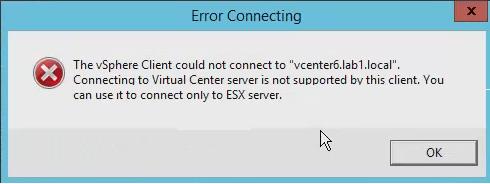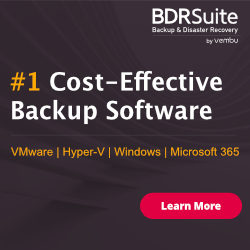
Tough days are ahead for those who always use vSphere client (C# version) as VMware limited the connectivity to only for ESXi or Update Manager.
Expected one???
Why using the vSphere Client?
But the legacy client is still there, so what is its role and why we need to use it?
First answer is simple: you still need it to manage single hosts when the vCenter Server is not deployed or it’s not running (consider the case of a virtual vCenter Server). Considering that the server part of the vSphere Web Client is a vCenter components, you cannot use this kind of interface until the vCenter Server is up and running. And this could be a dangerous dependencies, expecially if you plan to deploy vCenter Server as a VM.
But starting from vSphere 6.0, the old client it’s only suitable for direct ESXi host connections. If you try to use the vSphere Client to connect to a vCenter Server you will receive this error message:
Remember also that the old client can only manage VM with virtual hardware versions from 8 to 11 (11 is the new virtual hardware of vSphere 6.0), so be sure to upgrade all old VMs at least to v8 if you want to manage them also with this client.
And what about VUM?
The vSphere Web Client when you are connected with the vCenter Server and the vSphere Client when you want to reach an ESXi host directly?
VUM is another “legacy” component that is still alive, but is mainly the same of 5.x versions, with only a Windows components, not directly integrated with other vCenter components and still using a SQL Server database (by default the server part will install a SQL Express 2012 instance).
But VUM is also a (old) vCenter plugin, so how can you manage it if the new vSphere Client cannot connect to the vCenter and download this plugin? So solution is using the VUM Client?
In vSphere released with 5.5 and 5.1 U1 there was an integration between VUM and the vSphere Web Client where was possible:
- Attach and detach baselines and baseline groups
- View compliance and scan results
- Scan a selected inventory object
Now, operations such as creating baselines and baseline groups, importing ESXi images, staging, and remediation are available only from the VUM Client. Let’s hope that in the next release VUM will be replaced by a new component, better integrated with other vCenter objects and fully available in the Web Client.



